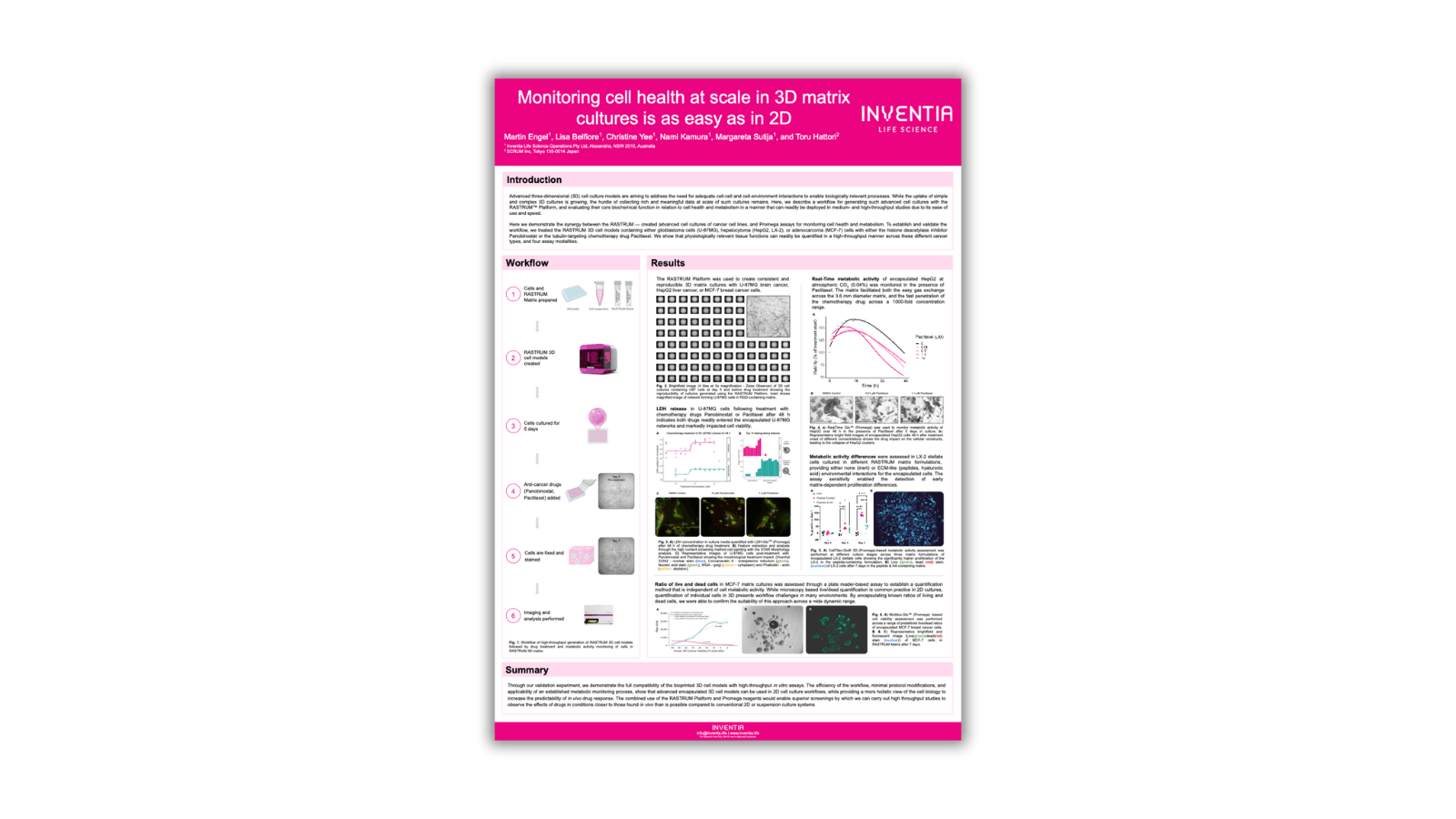
Monitoring cell health at scale in 3D matrix cultures is as easy as in 2D
Presented at the Conference on Biomolecular Screenology in Saitama, Japan by:
Martin Engel¹, Lisa Belfiore¹, Christine Yee¹, Nami Kamura¹, Margareta Sutija¹ and Toru Hattori²
¹ Inventia Life Science Operations Pty Ltd, Alexandria, NSW 2015, Australia
² SCRUM Inc, Tokyo 135-0014 Japan
Abstract
Advanced three dimensional (3D) cell culture models are aiming to address the need for adequate cell-cell and cell-environment interactions to enable biologically relevant processes. While the uptake of simple and complex 3D cultures is growing, the hurdle of collecting rich and meaningful data at scale of such cultures remains. Here, we describe a workflow for generating such advanced cell cultures with the RASTRUM™ platform, and common 2D cell culture assays for their suitability to assess core biochemical functions in medium-high throughput 3D cell cultures.
To establish and validate the workflow, we treated the 3D synthetic hydrogel cultures containing glioblastoma cells (U87), hepatocytoma (HepG2, LX-2), or adenocarcoma (MCF-7) cells with either the histone deacetylase inhibitor Panobinostat or the tubulin-targeting chemotherapy drug Paclitaxel. We show that physiologically relevant tissue functions can readily be quantified in a high-throughput manner across these different cancer types, and five assay modalities, including high content imaging.